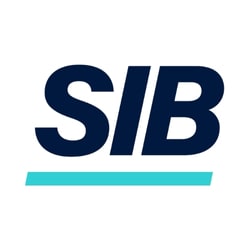When Will Johnson was pulling together data to share with potential investors about a Series D capital raise two years ago, it became clear the high-flying startup he had just joined as CFO was lagging in one key area: its support infrastructure.
Iterable, a cloud-based marketing software company launched in 2013 by a former Twitter engineer, was poised to command a big share of the $20 billion customer engagement market, but in its rush to grow it had under-invested in the kind of back-office capabilities it needed to scale adequately.
“In parallel with the capital raise, which was the first strategic project I worked on, I thought we could be [managing and interpreting] our data much better than we were,” said Johnson, who joined Iterable in mid-2019 after serving as CFO of two other software-as-a-service (SaaS) companies.
To improve its use of data, Johnson worked with the company’s CEO and COO to add a business intelligence platform and a team to go along with it to work side-by-side with his financial planning and analysis (FP&A) team.
“The Series D financing process for me was an eye-opener,” Johnson told CFO Dive. “Here’s a real opportunity for our business to better leverage the data that we already had within our four walls but in some areas was not easily accessible. We wanted to make sure the data ultimately flowed to a single source of truth, and that we, both in the finance team and the management team at large, could easily access and interpret that data and then use it to make decisions around our business plan.”
The Series D generated $60 million and within another year Johnson was back in the market to take advantage of investor interest and raise an additional $200 million in a Series E, which closed in mid-June.
The additional funding, along with the company hitting $100 million in annual recurring revenue (ARR), considered a SaaS benchmark, raised the company’s valuation to $2 billion, setting the stage for it to go public in another year or two should it decide to do that.
“The customer engagement market that we’re in is a massive addressable market,” said Johnson. “We have strong execution and a great product, but that market dynamic really is one of the key elements I would attribute to why our investors have the high expectations that they do for our business.”
Strategy focus
Johnson, who invested in tech startups on the venture capital side for a decade before moving to the operational side half a dozen years ago, sees the job of CFO in strategic terms.
“I’m not an accountant by training,” he said. “I’m more business focused than an accountant. I certainly know enough accounting to be dangerous but I rely on my controller and his expertise from an accounting standpoint. That’s becoming more the case for CFO roles.”
In this strategic capacity, Johnson sees his role as the executive who brings a long-term view — “looking beyond the headlights,” as he puts it — and as the chief collaborator, the one who helps ensure the CEO, COO and the function heads have the resources, data and analysis they need to do their jobs. He also sees his role as a storyteller, but in a different way than the CEO.
“The story is infused with numbers and metrics,” he said.
It’s in that storytelling role that, he said, he learned why the availability of data is so important.
“In addition to selling investors on the opportunity, you’ve got to be able to back it up in a data room and a diligence process,” he said.
Audience groups
Although investors are a CFO’s key audience, internal audiences are just as important, because talent is the backbone of any SaaS business.
“A lot of people [in the business] are not numbers folks, generally speaking,” he said. “So, I see my role as making sure that my peers on the management team [and our employees] are well informed through data and then we can collectively act on that data.”
One way this translates internally is in helping the HR team succeed as it competes for talent in the tight labor market.
“If we need to hire 50 people, how many company interviews do we need and how many offers do we need to make to people to ultimately net 50 hires?” he said.
Capital strategy
In addition to the two capital raises, Johnson last year tapped his market experience to restructure the company’s venture debt, a reserve it had in place for years but that wasn’t serving the business in the best way it could.
“I felt like the lender that we had on the books when I joined wasn’t paying the attention to us as I thought they should,” he said.
Based on the term sheets that equity investors presented to the company during its last two capital raises, Johnson saw the market was valuing Iterable as a top quartile company, which made clear he could get a better deal with a different lender.
“We’ve been fortunate in each of our capital raises to have at least five term sheets to work from,” he said. “Those other offers, those other term sheets, opened my eyes. I saw that, yes, we can do much better than the structure we had in place, so that was the key driver.”
The deal included an equity component, which the company tapped to give staff a chance to boost their income by liquidating some of their shares in an employee tender.
“They had an opportunity to have a choice as to whether to take a small amount of liquidity off the table,” he said.
Johnson said his work on behalf of the company in the capital markets — the two capital raises along with the debt restructuring and the employee tender — are first among the efforts he thinks has created strategic value to the business. They not only gave the company the means to extend its runway until leadership decides its next move, possibly including a public offering, but they gave the company a chance to recognise its most important asset, its talent.
“It’s a culmination of those things that I’m proud of in the first couple of years I’ve been here,” he said.



















